HOW TO FIT A DURAMAX DOOR, FRAME AND HANDLE
Bunnings are now selling the complete door solution [Door + Frame + Hardware] – no need to find frame or choose hardware – requires painting only. These doors, handles and frames come as a kit set that you can install yourself following these simple steps.
Once you have purchased your complete door solution you can start your DIY project but first you need to ensure you have everything you need.
What you need:
– 4mm Wood Drill Bit
– 6mm Concrete Drill bit
– No.2 Square Driver
– Hex Driver
– 1 metre minimum Spirit Level
– Electric Drill
– Timber Facing
1. Check the size of the door to your opening is going to work before unpacking.
810 Door – Minimum to maximum hole size 2025-2040 x 855 – 885mm
860 Door – Minimum to maximum hole size 2025-2040 x 905 – 935mm

2. Carefully lay door down on table or saw-horse and remove packaging, checking there is no damage to door and frame. Carefully take handle package from out of the top of the door packaging.

3. Decide what side you want the hinges to be on, this will swing the door to the left or to the right. You can change this by turning the door frame upside down, and around for open in or open out. Fix head using AA woodscrews.
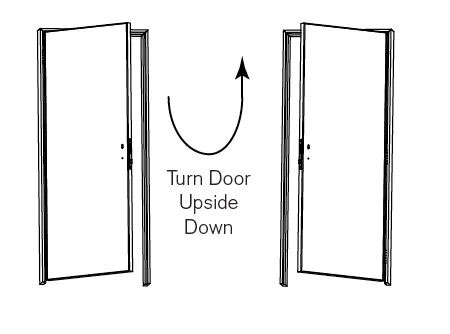
4. Place the door into the opening. Open door 90º putting a packer under the door to take the weight. Place spirit level onto jamb EDGE checking that it’s plumb. Drill 4mm hole into timber framing through jamb. (If concrete or brick use 6mm masonry drill). Then start by screwing (AA-Timber or AA-Concrete screws) in the top and bottom holes on hinge side first. Don’t wind them right in till you have double checked that the jamb EDGE is plumb. You may need H packers to pack out the jamb from the wall to be able to plumb the jamb.
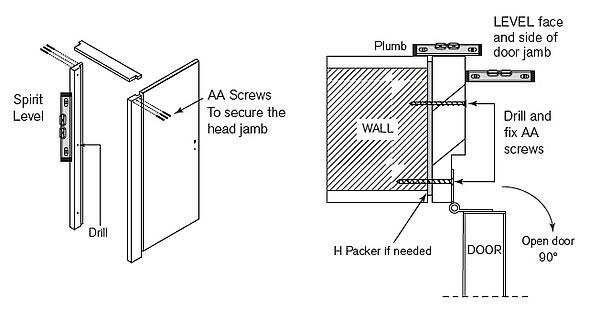
5. With door shut, check that the clearance around the door is right (should be 4mm gap all sides of door and jamb) and check that the door is sealing against rubber seal. After opening door again, drill 4mm hole into timber framing through jamb on the lock side of frame. (If concrete or brick 4mm use masonry drill). Then start by screwing in the top and bottom screws on this side. Don’t wind them right in till you have double checked that the jamb EDGE is plumb. You may need H packers to pack out the jamb from the wall to be able to plumb the jamb.
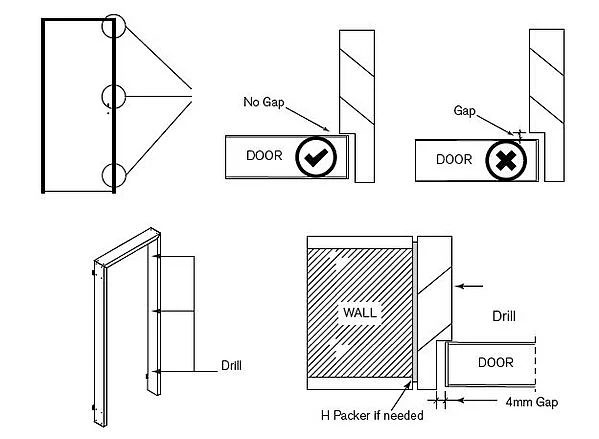
6. Before screwing in all fixings, check that the door gap of 4mm is even right around the door. If it isn’t you need to unwind the fixing at that point and take out or put extra packers in before doing fixing back up. Finally make sure all fixings are done up tight.

7. Depending on what way the door swings, you may need to take the lock body out by un-screwing CC screws and turning it upside down. The cylinder hole, (the oval hole in the lock body) needs to be at the bottom.
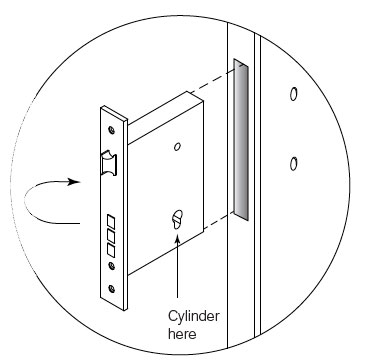
8. Place cylinder into bottom lock body hole and fix in place with BB screw. Then slide spindle into top lock body hole.
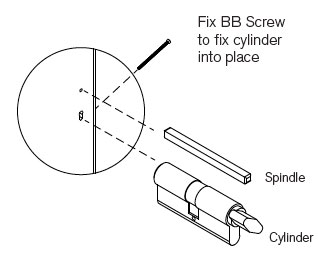
9. Using DD screws fix the lever handle onto the spindle and the cylinder each side of the door. Use CC Screws to fix lock body in place. (If not already done)

10. Push in the PEF backing rod behind jamb and wall to stop wind, top and sides After painting jamb, press weather seal into groove on jamb.

11. Fit facings to outside and inside of frame. These can be of your choice and can be sourced from Bunnings.
Renovate Your Entrance: Checklist, Budget and Timeline Planner [Free Excel Template]

